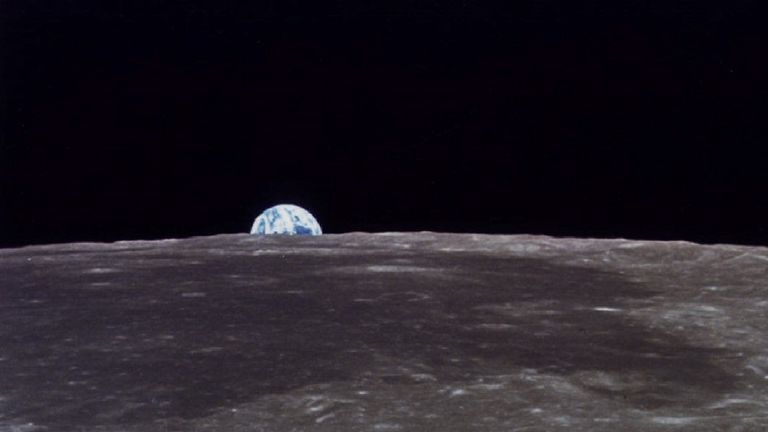Scientists have discovered rust on the moon and say oxygen from Earth is partially responsible.
The finding comes after analysis of data from the Indian Space Research Organisation’s Chandrayaan-1 orbiter.
Light reflecting off surfaces at both poles was found to have the spectral signature for the mineral hematite – more commonly known as rust.
Hematite, a type of iron oxide, is formed when iron is exposed to oxygen and water.
The study’s lead author, Shuai Li from the University of Hawaii, called it “very puzzling” as “the moon is a terrible environment for hematite to form in” because it is airless with no oxygen or liquid water.
He contacted scientists at NASA’s Jet Propulsion Laboratory (JPL) – the department that built Chandrayaan-1’s Moon Mineralogy Mapper instrument.
Abigail Fraeman, a JPL scientist, said: “At first, I totally didn’t believe it. It shouldn’t exist based on the conditions present on the moon.
“But since we discovered water on the moon, people have been speculating that there could be a greater variety of minerals than we realise if that water had reacted with rocks.”
Three explanations have been explored.
Firstly, that despite the moon not having an atmosphere, it does contain trace amounts of oxygen – which travels 239,000 miles from Earth’s magnetic field.
This explains why more hematite is found on the side of the moon facing Earth and suggests our planet may be the driving force for the rust.
It is also possible the oxygen travelled from Earth to the moon when the two were closer, as they have been moving apart for billions of years.
The second reason could be the level of hydrogen present – this is delivered to the moon and Earth via solar winds from the sun.
Hydrogen is a reducer, meaning it helps prevent oxidation and rusting.
The Earth’s magnetic field protects the planet from solar winds, it also blocks over 99% of this activity during periods of the moon’s orbit – particularly when the moon is full.
This means there is an opportunity during the lunar cycle where rust has the ability to form.
The third explanation suggests that water molecules – found within the moon’s surface – are released when dust particles hit the moon, mixing them with iron.
Heat from this impact may then increase the rate of oxidisation.
They also suggest the dust particles themselves may contain water molecules which then mix with iron.
At specific times, the moon is shielded from solar winds that carry hydrogen, this paired with the presence of oxygen could cause a rust-inducing chemical reaction.
Dr Fraeman suggested these reasons could also explain why rust is found on other airless bodies, such as asteroids.
JPL scientist Vivian Sun added: “I think these results indicate that there are more complex chemical processes happening in our solar system than have been previously recognised.
“We can understand them better by sending future missions to the Moon to test these hypotheses.”
This research has been published in Science Advances.


